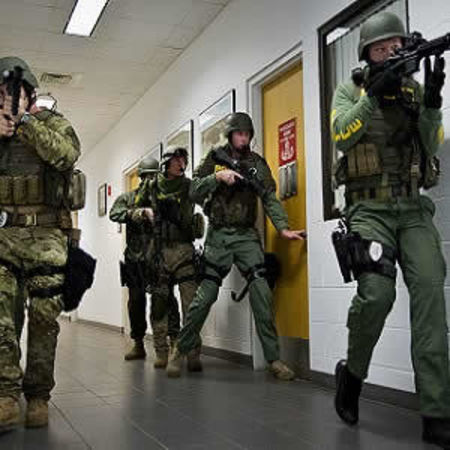Active shooter events have become more frequent, and hospital
grounds have not been spared from such horrific acts of violence. There were
164 hospital-related shootings recorded between 2000 and 2011.
See Also: Balancing Hospital Security Needs and Costs
Patient safety demands safe facilities. Part of that includes having a smart, effective active shooter plan. While there may never be a need to use it, planning for untoward events will keep hospital staff, patients and visitors safe.
Given the unpredictable nature of an active shooter situation, individuals must be prepared to manage it before law enforcement personnel arrive on the scene. Scott Cormier, VP of emergency management, environment of care (EOC) and safety at Medxcel Facilities Management, offers these tips on how facilities can have a smart plan to effectively respond to an active shooter situation.
1. Establish reporting method for active shooter incidents to staff & guests
Providing people with accurate information and clear instructions can prevent confusion and panic. The quick delivery and notification of an incident can keep people out of harm’s way. In creating the notification plan, hospital staff need to consider multiple factors to make sure the notification plan is as clear as possible, including communication barriers (multi-lingual, hearing impaired and learning disabled messaging) and delivery channels (SMS or email). Another critical aspect is the ability to alert hospital workers in more remote areas of the hospital grounds, other local hospitals and emergency responders.
2. Create emergency escape procedures & route assignments for healthcare staff
The golden rule is less people in the hot zone means less victims. Thus, active shooter plans should identify safe areas and provide floor plans of the entire healthcare network. The plan also should include secondary and, if possible, tertiary routes for when the primary evacuation routes are unusable.
3. Establish lockdown procedures for individual units, locations & other buildings
Hospital grounds normally include multiple buildings and wings. In creating an active shooter plan, teams should consider how to effectively lockdown patients, visitors and staff to keep them safe, making sure to take into account access to functional safety needs when advising on shelter sites. In selecting a shelter site, optimal location characteristics include thick walls, solid doors with locks, minimal interior window, first-aid emergency kits and communication devices.
4. Integrate plan with facility Emergency Operations Plan & Incident Command System
An active shooter plan should be integrated with both the hospital’s Emergency Operation Plan (EOP) and Incident Command System (ICS). Hospitals are required to have an EOP which describes how a facility will respond to and recover from all hazards. An ICS is a management system designed to enable effective and efficient domestic incident management by integrating a combination of facilities, equipment, personnel, procedures and communications operating within a common organisational structure.
5. Establish pertinent info for emergency response agencies & hospitals
Pertinent information for other local hospitals and emergency response agencies may include items such as telephone numbers, names and distance from the active shooter location. Having this information collected and easily accessible during an emergency can help teams act quickly when time is at a premium.
6. Maintain plan with ongoing training
Ongoing training is an important part of ensuring everyone involved shares the most up-to-date resources. Training need not be limited to one approach, consider using methods such as annual competencies, monthly newsletter, orientation and training videos.
Source: Healthcare Business & Technology
Image Credit: Wikimedia Commons























